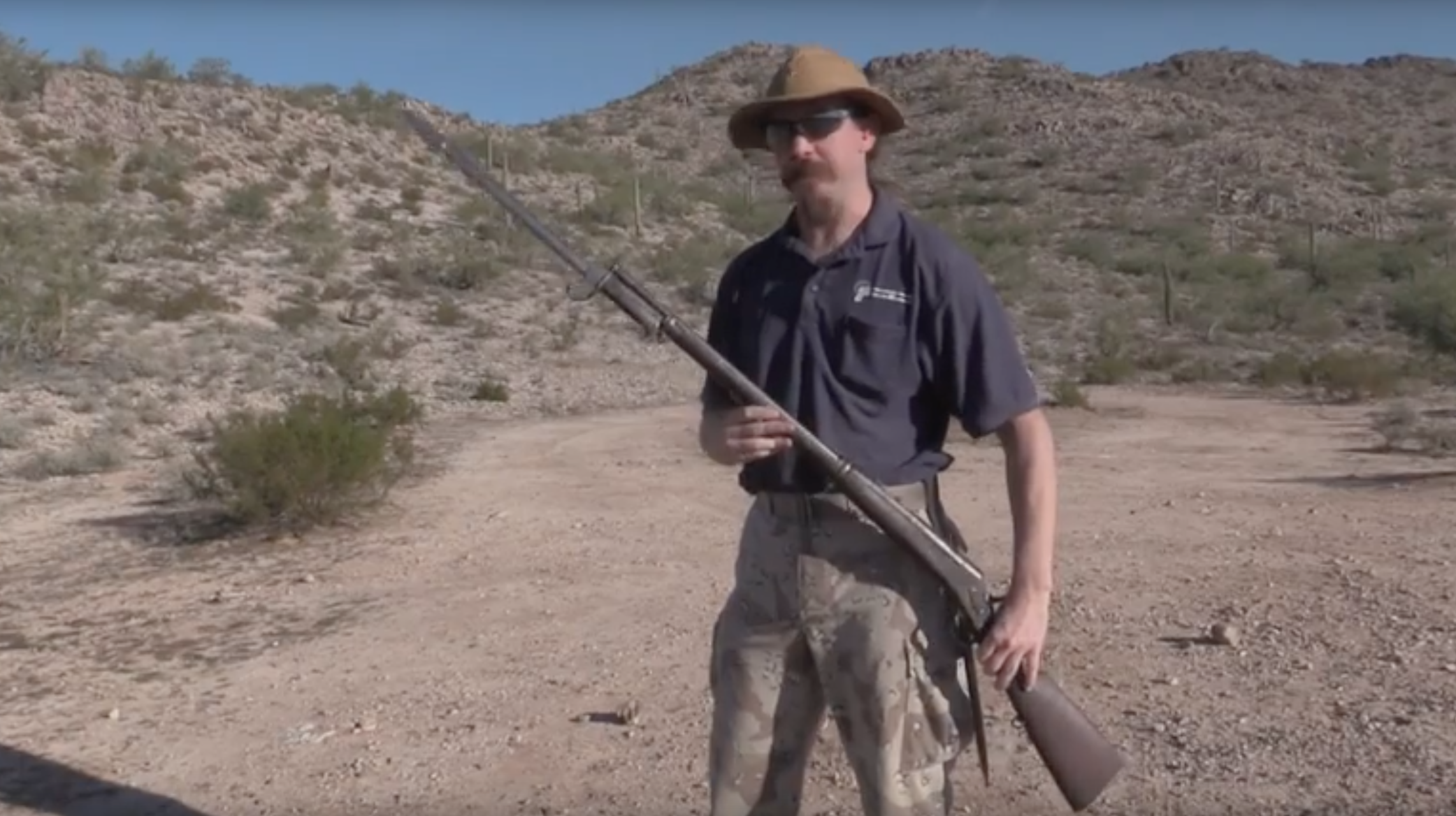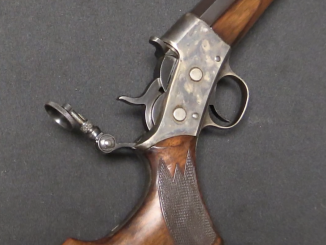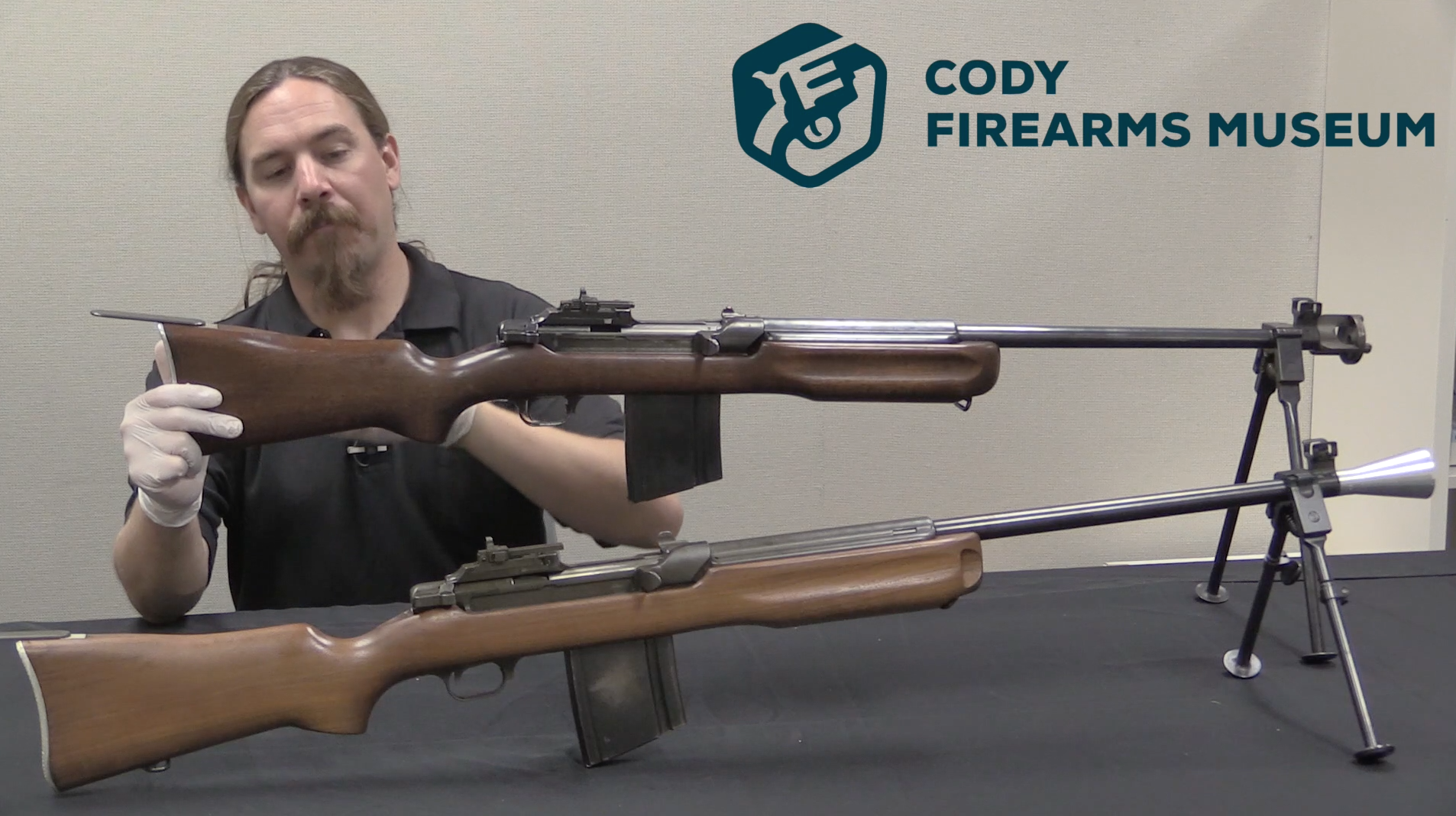The Ball Repeating Carbine was one of the last Civil War arms manufactured, as an initial order of 1,002 units was ordered in 1864 but not delivered until shortly after the cessation of hostilities in 1865. The carbine was designed by Albert Ball of Worcester, Massachusetts and manufactured by Lamson & Co of Windsor, Vermont (which also made Palmer carbines).
The military Ball carbines were chambered for the .56-.50 Spencer cartridge, to simplify ammunition supply. Reportedly a small number were also made for commercial sale after the war, and these were chambered for the .44 Long Rimfire cartridge. In either caliber, the most interesting feature of the Ball was how it split the chamber into two separate pieces, and used the lower one as a cartridge elevator. This system apparently worked quite well when new, but suffered accuracy problems as the components started to wear with use.




Beautiful rifle guys!
And perfect timing too, we just got done learning about the civil war and reconstruction in APUSH so it’s cool to make this connection.
I wonder how strong the action was? The separated chamber seems a little questionable. I can see why it wasn’t more common(well, and the fact that rimfire was replaced by centerfire). It seems to me that the alternatives already then available would have been better choices.
Still, the gun looks very handy.
Very Nice!
Sounds like they never took a life or made a wound.
What did it sell for?
Interesting design. It seems a little reminiscent of the Browning-designed Winchester Model 1887 Shotgun. I think the lever Ian pointed out when the action is open also functions as the ejector.
“In either caliber, the most interesting feature of the Ball was how it split the chamber into two separate pieces, and used the lower one as a cartridge elevator. This system apparently worked quite well when new, but suffered accuracy problems as the components started to wear with use”.
With modern materials and machining ( and possibly a few minor design modifications ), the Ball carbine might not ever have such long-term wear issues — an interesting proposition for a present-day replica.
I find the early breech loaders very interesting. In large part because of all the different ways the inventors solved problems. Also how quickly(a few years) some designs went from being the very best to being unwanted.
I wonder if the split chamber had any influence on the development of weapons later on, like the 40mm Mk18
i found the info. onthe Ball carbine interesting,but could not bring up avideo,why is that?
What is the locking mechanism? It isn’t apparent, but it doesn’t look as if it’d be very strong. I also think it’s a stretch to claim it “never took a life”. Presumably they were sold off into civilian service, and 1,000 rifles have 1,000 stories. Must have at least taken some game, anyway, which is taking a life.